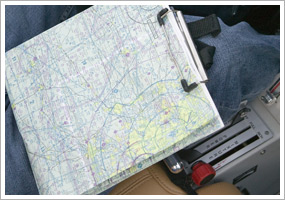| The following stories from the June 3, 2011, edition of AOPA ePilot were provided to AOPA members who expressed an interest in the particular subject areas. Any AOPA member can receive information tailored to their areas of interest by updating their preferences online |
- My ePilot—Light Sport Aircraft Interest -AD targets washers on Rotax 912 A series enginesThe FAA has issued an airworthiness directive (AD), effective June 16, requiring the replacement of certain defective washers and gasket rings on the magneto ring flywheel hub of Rotax 912 A series engines. The action is intended to prevent “loosening of the magneto flywheel hub and consequent ignition failure, possibly resulting in damage to the engine, in-flight engine shutdown and forced landing, damage to the aeroplane and injury to occupants,” the AD says. The European Aviation Safety Agency issued mandatory continuing airworthiness information, and Rotax published a mandatory service bulletin. The FAA estimates 475 aircraft of U.S. registry will be affected and compliance will cost $2,060 per engine. training tipsSame route, different plans Terrain is one consideration. A route with prominent landmarks from start to finish begs for the low-tech pilotage approach, letting you focus on holding course and altitude, secure in knowing that you are well established on your route. Flight above more uniform countryside is easier with electronic assistance. Set the destination in your GPS, or intercept and track the VOR radial that will take you there. Make distance checks along your course by identifying radials from other VORs that cross your course line as you proceed along the route. As your experience grows, you can set new challenges for yourself for your cross-country flights. Fly a route that requires you to choose between transiting or overflying some busy airspace. Or select the route that would let you fly the entire course while squawking the VFR transponder code 1200 and staying off the radio until your arrival at the destination. Altitude selection is often dependent on a compromise between terrain clearance for the minimum altitude you would fly, and cloud heights for the highest. (You can fly above some clouds, but remember that when flying solo, a student pilot must always maintain visual reference to the surface. This would prohibit solo flights in clear air above an overcast.) You can fly at one altitude for the entire route, or take a laddered approach. That method builds in some practice for that future flight when the altitude you choose becomes unusable because of clouds, low visibility, or turbulence. Just as pilots develop certain habits for flying their cross-countries, they get used to individual aircraft in the training fleet. One of these days you might go out to the field for a cross-country flight, only to find that you’ve been switched to that other trainer with a very different set of radios and navigation capabilities. That’s when you’ll be glad you can select among many different plans to get to your destination. training productsDavid Clark mic protector from Wick’sIt’s the little things that can make a difference. The microphone “muff” on the David Clark headset isn’t just there for show: It reduces wind and ambient cockpit noise while transmitting. If yours went missing, you can order a replacement from Wick’s Aircraft Supply for $4.25. Order online.
Note: Products listed have not been evaluated by ePilot editors unless otherwise noted. AOPA assumes no responsibility for products or services listed or for claims or actions by manufacturers or vendors. final exam
Question: I’ve been training for my private pilot certificate for a few months now and I’m anticipating that in just a few flight hours my instructor is going to endorse me for my first solo flight. I'm excited about reaching that milestone; however, I’m also a bit nervous. Does AOPA have any information on what someone’s first solo flight is like?
Answer: Congratulations on the progress you have made so far with your flight training. Reaching the solo flight stage is a major accomplishment. Check out the Solo Resources on the Flight Training website, which include frequently asked questions, quizzes, and loads of other information to help you as you approach your first solo. Also, be sure to explore the entire Flight Training website, which includes a wealth of information for student pilots.
Got a question for our technical services staff? E-mail [email protected] or call the Pilot Information Center, 800/872-2672. Don’t forget the online archive of “Final Exam” questions and answers, searchable by keyword or topic. |
 How many ways are there to fly to tomorrow’s cross-country destination? From choosing a navigation method to selecting an altitude or specific aircraft performance parameters, there are multiple methods of managing the mission.
How many ways are there to fly to tomorrow’s cross-country destination? From choosing a navigation method to selecting an altitude or specific aircraft performance parameters, there are multiple methods of managing the mission.

